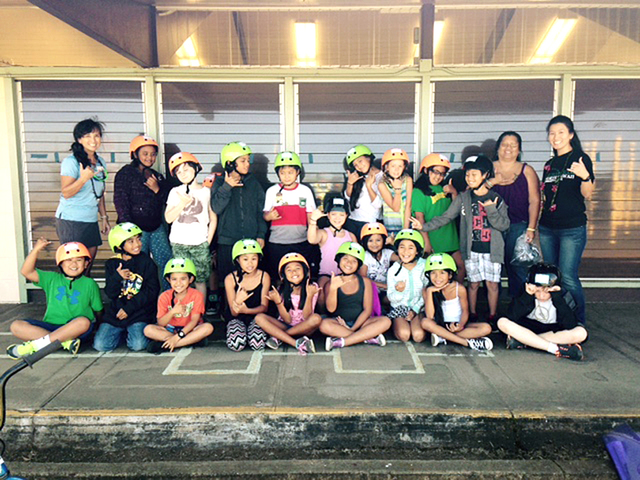When it comes to bicycle safety, North Hawaii fourth-graders have their heads — and new helmets — on straight. ADVERTISING When it comes to bicycle safety, North Hawaii fourth-graders have their heads — and new helmets — on straight. In
When it comes to bicycle safety, North Hawaii fourth-graders have their heads — and new helmets — on straight.
In the past three months, staff from North Hawaii Community Hospital’s Trauma Program have partnered with Peoples Advocacy for Trails Hawaii to provide free bicycle training and safety education to more than 250 fourth-grade students at Kohala and Honokaa Elementary, and Kanu o ka Aina New Century and Laupahoehoe Community Public Charter schools.
“Partnering with PATH offered an ideal opportunity to provide injury prevention and safety education to North Hawaii students,” says Kimberly Bastien, RN and the hospital’s Trauma Program manager.
“While PATH taught students proper riding techniques and skills through their Bike Ed program, we provided bicycle safety education and emphasized the importance of wearing a helmet.”
Each participating student was properly fitted with a free multisport safety helmet, provided by the hospital’s trauma team.
“Students were thrilled once they learned the brand new helmet was theirs to keep,” Bastien said. “It made bike education more interesting and fun for them.”
“We are delighted to partner with North Hawaii Community Hospital’s Trauma Program in our mutual quest to keep North Kohala youth safe while they explore the joys of bike riding,” said Tina Clothier, PATH executive director. “Having the NHCH Trauma Program as our partner has raised the bar for our ever-popular Bike Ed classes.”
PATH is a nonprofit bicycle and pedestrian advocacy organization dedicated to safely connecting the people and places on Hawaii Island with pathways and bikeways. PATH’s Bike Ed is a bicycle skills program offered to all Big Island schools and youth clubs.
During this three-day bicycle program, students learn important bicycle and safety skills, including: the fundamentals of traffic and road safety,
hand signals, proper bicycle clothing, as well as how to navigate an intersection, to yield and to ride in control with others.
“Today, children are riding bicycles, scooters, skateboards and other ride-on vehicles,” said Bastien.
“Wearing a helmet is crucial to injury prevention and results in fewer injuries in our emergency room.
Not only do helmets reduce the risk of bicycle-related head injury by 80 percent (according to the Center for Disease Control and Prevention), but Hawaii state law requires kids younger than 16 years of age wear a helmet.
“We understand many families may not have the means to purchase a helmet; that’s why we’re doing our part to help keep our keiki safe.”



